She came in through the bathroom window
Roll up, roll up for a London rock’n’roll magical mystery tour
‘See the window on the first floor – on the left – that’s the bathroom. There’s a drainpipe on the side wall – you can’t quite see it from here—but two girls climbed up there and got in. They took two of Paul’s shirts which he was a bit annoyed about. And that’s what gave him the inspiration to write ‘She Came In Through the Bathroom Window’.’
We’re sitting in a white minivan outside number 7, Cavendish Road, St John’s Wood, Paul McCartney’s London pad, a place he’s had since 1966 and an asset that might be on the table in the forthcoming divorce settlement with wife Heather Mills. There are four of us, my 15 year old son Calum and his schoolmate Max, myself and our tour guide Peter.
“I think he’ll keep it,’ Peter says.
We’re on a magical mystery tour of West London’s Beatles and Swinging Sixties rock’n’roll landmarks. While the highlight is undoubtedly the zebra crossing made famous by the Beatles on the cover of Abbey Road, just round the corner from McCartney’s house, the bathroom window story is just one of a string of anecdotes that brings the sixties back to life.
The tour is one of a series run by the Back Road Touring Company under the Access All Areas Rock Tour banner. Tours leave from the Hard Rock Cafe, at the junction of Piccadilly and Hyde Park Corner.
There are two 16 seater mini-buses doing the tour on the day we do it and as we are the last to arrive we have the pleasure of being the only passengers on the second bus. Our guide Peter tells us he’d moved to London from Gloucestershire in 1967 and worked in a King’s Road boutique so he knew what he was talking about, As we pull off he points down Hertford Street, behind the London Hilton and tells us how in 1967 he had looked down that street and seen Cat Stevens, with long black hair and beard and thigh-length leather boots, walking towards him. ‘People used to say I looked a bit like Cat Stevens then,’ he says, ‘Which I quite liked.’
He stops just around the corner, on Curzon St, Mayfair, and directs our attention to a bricked in window in a flat to the left and behind us. It’s in number 9 Curzon Place and, somewhat amazingly, is the flat in which both Mama Cass Elliott of the Mamas and Papas and Keith Moon, drummer with the Who, died. Wow.
We turn left down Park Lane, past The London Hilton where the Beatles met the Maharishi Mahesh Yogi in 1967 and down Grosvenor Place with the wall of the Queen’s Buckingham Palace back yard on our left and turn right into Chapel St, in the exclusive residential area of Belgravia. Number 24 in this quiet street was the place the Beatles manager Brian Epstein called home from December 1964 after his move from Liverpool with the fab four – and the place he died in 1967.
Just the other side of Belgrave Square, Peter points out a basement flat in Chesham Place where Pete Townshend of the Who lived in 1965 and where he recorded a demo of ‘My Generation’.
Then it’s on to the Kings Road Chelsea, where the who’s who of swinging London used to parade in all their finery on Saturdays in the sixties.
Then it’s on to the Kings Road Chelsea, where the who’s who of swinging London used to parade in all their finery on Saturdays in the sixties. A short way down, Peter turns left and stops to point out the penthouse of a large red brick apartment block, which he informs us is Ringo Starr’s London pad. ‘He always comes for the Chelsea Flower Show,’ he says. ‘It’s held down the end of the street at the Royal Hospital’
As we meander in and out of the streets off the Kings Road, Peter points out Eric Clapton’s London house (hidden behind some black gates) and next door the location of the studio where Pink Floyd recorded their early singles. Also the photographic studio where the Sergeant Pepper album cover was shot; the site of the Chelsea markets where Donovan’s girlfriend of the time, Jenny Boyd (sister of George Harrison’s wife Patti Boyd) had a stall that inspired his 1968 hit ‘Jennifer Juniper’; and back on the main drag, where fashion innovator Mary Quant had her shop (now a Cornish Pasty shop); and the Pheasantry, an historic Georgian building originally used to raise pheasants for the royal household. In the sixties it was a well-known ‘artists’ colony, where Sydney artist Martin Sharp shared a flat with Eric Clapton and designed the high psychedelic cover art for Cream’s 1968 masterpiece Disraeli Gears. Australian writer Germaine Greer also lived there while she wrote the feminist classic The Female Eunuch. (It now houses a Pizza Express.)
Down the less salubrious end of Kings Road, known as World’s End, Peter points out the shop run by Malcolm McLaren in the seventies where the Sex Pistols were conceived and Johnny Rotten passed the audition for lead singer by miming to an Alice Cooper song on the shop jukebox. A couple of blocks further on he points out the first floor space where the Rolling Stones used to rehearse above the corner pub that once stood there and just round the corner in Edith Grove, the infamous flat where Mick, Keef and Brian Jones lived in true poverty in 1962 while struggling to create a name for themselves.
In complete contrast, at the end of Edith Grove is the upmarket Cheyne Walk which fronts the River Thames and two hundred metres along to the left is the Queen Anne town house at number 48 that Mick Jagger bought in May 1968 and lived in for the next ten years. Shortly after he moved in, the house was raided by the police and Jagger and then girlfriend Marianne Faithful were charged with possessing cannabis. Mick was fined £200. Faithful was acquitted.
In the studio that Jagger had built at the end of the garden, long jam sessions with Keith Richards produced many of the songs for the album Let It Bleed, including ‘Honky Tonk Women’, ‘Gimme Shelter’ and ‘Midnight Rambler’.
Cheyne Walk is the last stop on the Chelsea section of the tour and Peter heads up through Kensington, passing Bouji’s, the nightclub where the Princes William and Harry are often captured by the paparazzi after a night on the turps; the party cake shop run by Paul McCartney’s former girlfriend Jane Asher; Imperial College where Queen guitarist Roger May studied to be a radio astronomer; to the Royal Albert Hall, venue of many memorable performances, rock, pop and otherwise. It’s rumoured to be the setting for the London run of the Cirque du Soleil production of the Beatles’ musical Love, currently running in Las Vegas.
Then along Kensington High Street, past the site of sixties and seventies’ fashion palace Biba to Sticky Fingers, a Rolling Stones-themed restaurant established by their original bass player Bill Wyman that features a fulsome array of his personal memorabilia and paraphernalia. A quick pit stop to stretch the legs and check out the tiny hand-made bass guitar Wyman originally used with the Stones and then we pile back in the bus for the Holland Park-Notting Hill-Ladbroke Grove leg of the tour.
One of the nice side benefits of the tour, even for someone like me who has lived in and visited London many times, is that you see how different areas are connected. The Tube is a fantastic transport system, but it can turn you into a bit of a mole, only popping your head up and exploring the areas around the Tube stations.
First stop on this leg is the late Freddie Mercury’s Georgian mansion at 1 Logan Place, Kensington—now owned by previous partner Mary Austin. ‘Just over the back is Earls Court,’ Peter tells us, with a knowing look. ‘Site of one of the earliest gay pubs in London.’ Then back up to Kensington High St, off which runs Melbury Road. At number 29 is the impressive red brick Tower House, home of former Led Zeppelin guitarist Jimmy Page, ‘a really nice bloke’ according to Peter, who sometimes signs autographs for people on the tour. The house was designed by noted architect William Burges in 1877.
We’re in seriously rich territory now and motor up Abbotsbury Road alongside Holland Park (the park) to Holland Park (the street) with its magnificent 19th-century four-story townhouses. Buying here will set you back about 15 million pounds or more. At number 11 lives Virgin Records supremo Richard Branson and a few houses down, Van Morrison. In the converted mews (formerly stables) behind the grand houses, Dire Straits guitarist Mark Knopfler has his London abode.
Across Holland Park Avenue we go, into Notting Hill. First stop, the basement flat at 22 Lansdowne Crescent where Jimi Hendrix met his untimely end.
Across Holland Park Avenue we go, into Notting Hill. First stop, the basement flat at 22 Lansdowne Crescent where Jimi Hendrix met his untimely end. It was his girlfriend Monika Danneman’s flat and in September 1970, she left him sleeping, went out for some cigarettes and when she returned she couldn’t wake him. She called an ambulance and, by some accounts, he died because rather than laying him down the ambulance attendants strapped him upright in a chair and he was unable to vomit and choked. He was just 27 years old. Very sad.
Notting Hill was a predominantly West Indian area in the sixties and has a rich rock’n’roll history. We check out the mural outside Sarm West studios, site of the Island recording studios and offices in the late sixties. Then known as the Basing Street studios, they were frequented by Island acts like Jimmy Cliff, Bad Company, Fairport Convention, Free, King Crimson, Bob Marley and the Wailers, John Martyn, Mott the Hoople, Robert Palmer, Roxy Music, Cat Stevens and Steve Winwood (through the Spencer Davis Group, Traffic and Blind Faith). The studios were also used by such non-Island acts as the Eagles, Emerson Lake and Palmer, the Rolling Stones, Led Zeppelin, Dire Straits and the Clash. Led Zeppelin recorded ‘Stairway to Heaven’ and Band Aid recorded ‘Do They Know It’s Christmas?’ here. Impressive!
On to the high point of the tour – through Maida Vale to Abbey Road Studios and the iconic zebra crossing a few yards down the road.
On to the high point of the tour—through Maida Vale to Abbey Road Studios and the iconic zebra crossing a few yards down the road. What the Beatles cover (and all the copies and homages) doesn’t show of course is what is behind the camera’s point of view—which is the rather busy roundabout at the intersection of Abbey Road and Grove End Road! So we clamber out of the van for the obligatory photos and join the little crowd already participating as various snappers risk life and limb on the road near the roundabout in the fading light.
Down to Paul’s place in Cavendish Avenue, and from there past Lords Cricket Ground (which is at the end of his street) to a small Beatles shop and basement Beatles museum in Baker St, Marylebone, where we buy an Abbey Road poster and corduroy Beatles cap for Calum. Just round the corner is the picturesque Marylebone station with its large forecourt, location of the opening scenes in the Beatles’ first movie A Hard Day’s Night, where the fab four evade a mob of screaming fans by going through a succession of black London taxis parked side by side.
From the station we head out onto busy Marylebone Road and past the registry office where Paul McCartney married Linda Eastman in March 1969 and Ringo married Barbara Bach in 1981. Just across the road is Marylebone Magistrates Court, scene of a number of drug possession trials including those of John and Yoko (see below), Rolling Stone Brian Jones and Sex Pistol Johnny Rotten.
Into the heart of Marylebone with its mix of smart residences and upmarket offices we go, to 34 Montague Square, where the basement and ground floor flat were bought by Ringo Starr as an investment in 1965. He lived here briefly before his marriage to Maureen Cox. He then let it to Jimi Hendrix and Hendrix’s manager Chas Chandler and on calling round some time later was less than amused to find Hendrix had thrown black paint over the walls during an acid trip. Once Ringo had managed to evict Hendrix, Paul McCartney installed a small studio in the basement where he recorded most of the early demos for ‘Eleanor Rigby’.
The next tenants were John and Yoko and the flat was the scene of an infamous drug raid in October 1968, when Detective Sergeant Norman Pilcher of the Scotland Yard drug squad accompanied by six other police and two dogs came calling at midnight.
The next tenants were John and Yoko and the flat was the scene of an infamous drug raid in October 1968, when Detective Sergeant Norman Pilcher of the Scotland Yard drug squad accompanied by six other police and two dogs came calling at midnight. It was widely believed that Lennon had already immortalised Pilcher as ‘Semolina pilchard’ in the Beatles song ‘I Am the Walrus’. The Beatle described him as a ‘head-hunting’ cop whose aim was to ‘bust every pop star he could get his hands on, and he got famous’.
Lennon had been tipped off that he was next on Pilcher’s list and had the flat meticulously cleaned (in the belief that Hendrix must have left some trace of drugs), and always insisted he had been framed by Pilcher, who was subsequently jailed for corruption because of his practices in the drug squad. Lennon was fined £150 for possession, but the conviction was to give him years of trouble and pain. It was enough to trigger a deportation order against him in the US in 1971, and a subsequent four-year battle against being thrown out. Yoko Ono said it also contributed to the couple losing custody of her daughter, Kyoko.
On the final leg of the tour, we circle Manchester Square, former location of EMI Records, where the cover of the Beatles debut album Please Please Me was shot, dash over Oxford Street into Mayfair, past the flat in Green Street where all four Beatles lived for a short time in 1963 and pull up outside 3 Savile Row, former headquarters of the Beatles’ company Apple and scene of the rooftop concert, the last ever performance of the group, captured in the film Let It Be. These days it is the offices of an insurance company.
London is a city proud of its history and if you spend any time walking round the older parts you’ll probably notice the round blue plaques on the walls of buildings commemorating famous people who have lived and worked in the city.
London is a city proud of its history and if you spend any time walking round the older parts you’ll probably notice the round blue plaques on the walls of buildings commemorating famous people who have lived and worked in the city. There are over eight hundred plaques but only one commemorating a rock or pop musician. It’s Jimi Hendrix, who lived in the top floor flat at 23 Brook Street, Mayfair in 1968-69, next door to another house with a blue plaque commemorating the composer Handel.
Over two thousand fans watched on as the Who’s Pete Townshend pulled the string to unveil the plaque in September 1997. ‘Not all performers in pop and rock do deserve this honour, but Hendrix was an exception,’ Townshend said. ‘He was so special, so extraordinary; he’s up there for me with Miles Davis and Charlie Parker as somebody who was a virtuoso, an innovator. He was different, extraordinary and new.’
One of the criteria for inclusion in the blue plaque scheme is that the person being commemorated has to have been dead for 20 years, so maybe the current scant recognition of the leading lights of the sixties music revolution that changed the world will receive some recognition in due course. The blue plaque scheme has in recent years been extended to other areas of England and in 2000 a plaque was unveiled at 251 Menlove Avenue, Woolton, the Liverpool home where John Lennon spent almost all his life until he became famous in the Beatles.
That’s the end of the tour, and as Peter negotiates the evening rush hour traffic around Marble Arch after kindly agreeing to drop us in Bayswater, I reflect that even though it’s now nearly forty years ago that Sergeant Pepper taught the band to play, the music and cultural revolution that erupted at that time and the people that led it are still very much a part of London today. If you only know where to look …..
(An edited version of this article was published in the Sydney Morning Herald and the Age on 17 March 2007)


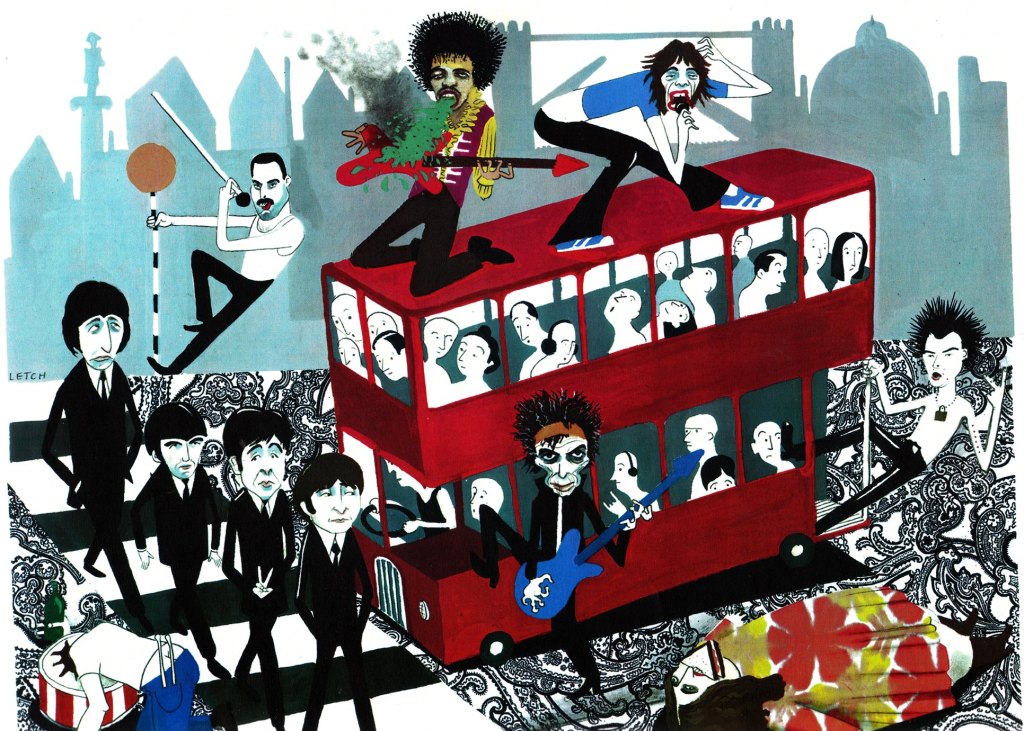

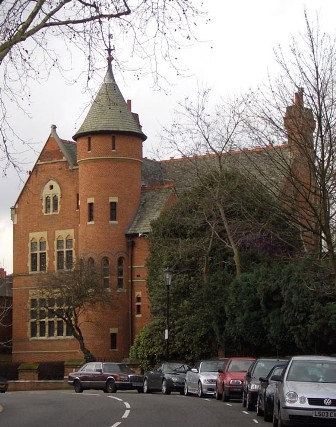
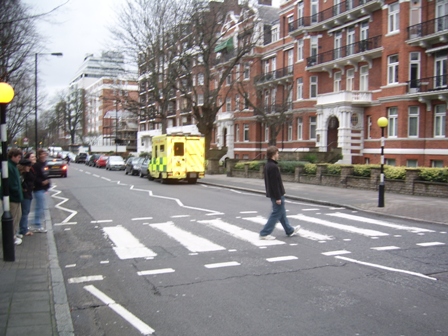
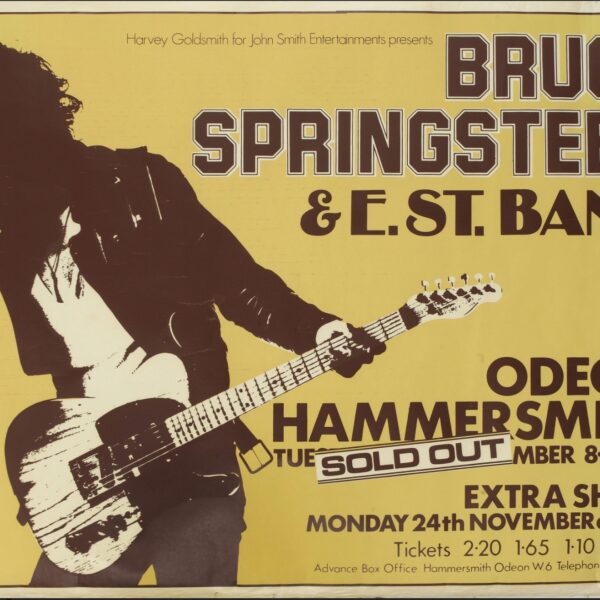

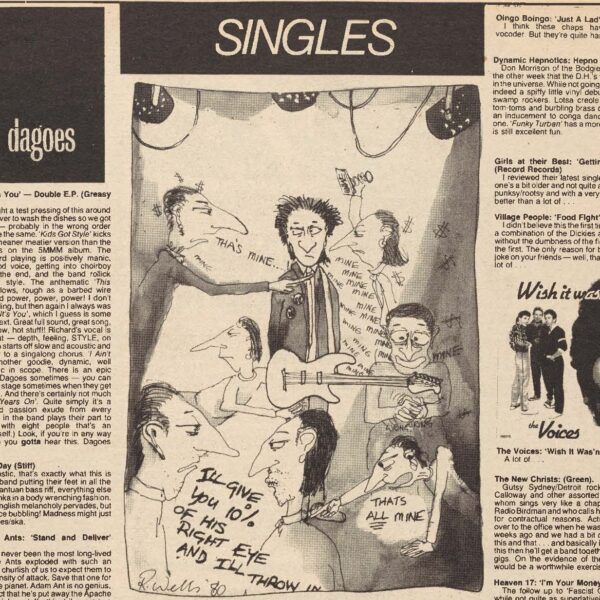
just lit on this obviously newish site and it looks great donald!
Thanks Clinton. If word never got through to you how much I loved the ‘Silver Roads’ compilation, then let me say it again – magnificent!